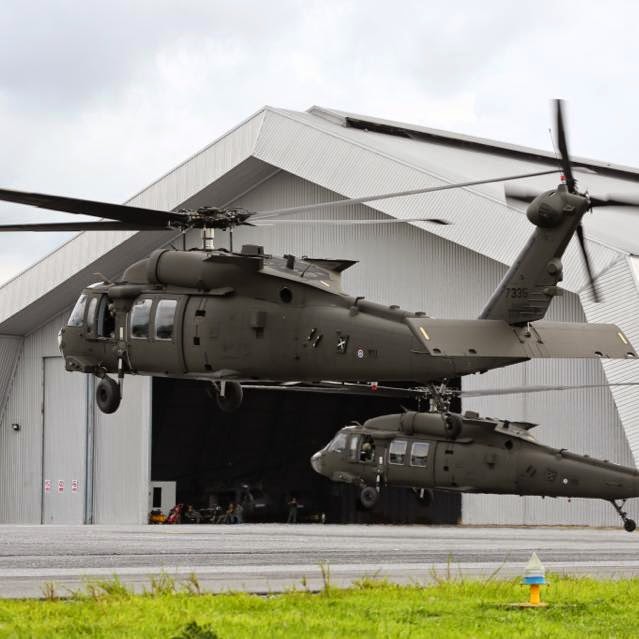Understanding the Mechanics and Engineering Behind Uh 60 Helicopters
The UH-60 helicopter, commonly known as the Black Hawk, stands as a pinnacle of modern-day rotorcraft modern technology, personifying a mix of durable design and elaborate technicians. As we peel off back the layers of the UH-60's layout, a globe of complex systems and thorough engineering comes to light.
History of UH-60 Helicopters
The background of UH-60 helicopters traces back to the late 1970s when the United States Army sought a advanced and functional energy helicopter to replace its aging fleet. In action to this requirement, the Sikorsky Airplane Company developed the UH-60 Black Hawk helicopter. Presented in 1979, the UH-60 swiftly ended up being a staple in army operations due to its impressive capacities.
The UH-60 was created to master a range of missions, consisting of troop transport, clinical emptying, electronic warfare, and unique operations. Its capacity to adjust to different duties made it a useful asset to the united state Military and other military forces worldwide
Over the years, the UH-60 system has gone through several upgrades and variations to boost its performance and maintain pace with progressing objective needs. These helicopters have seen comprehensive solution in disputes such as the Gulf Battle, Afghanistan, and Iraq, showcasing their reliability and convenience in varied functional atmospheres. The UH-60's rich history is a testimony to its enduring tradition as a premier energy helicopter.

Engine and Power Solutions
Utilizing innovative propulsion modern technology, UH-60 helicopters are outfitted with innovative engine and power systems to make sure ideal performance and reliability in a variety of operational scenarios. The UH-60, generally recognized as the Black Hawk, is powered by 2 General Electric T700-GE-701D engines, each capable of delivering up to 1,940 shaft horsepower. These turboshaft engines provide the essential drive for the helicopter to execute its missions properly, consisting of troop transportation, medical evacuation, and fight assistance.

Blades System and Aerodynamics
Exactly how do the rotor system and aerodynamics of UH-60 helicopters contribute to their operational effectiveness and trip capabilities? The blades system of the UH-60 helicopter plays an essential function in offering lift and propulsion. The UH-60 features a four-bladed, completely expressed blades system that permits for high ability to move and stability during trip. This design enables the helicopter to carry out a variety of goals, from transport and medical evacuation to fight procedures.
The rules of aerodynamics additionally play a vital duty in the performance of UH-60 helicopters. The streamlined body and rotor blade layout reduce drag, permitting the helicopter to accomplish higher rates and much better fuel performance. The wind resistant style of the UH-60 also adds to its capability to operate in varied environmental conditions, consisting of hot temperature levels and high elevations.
Avionics and Flight Control Equipment

In its complex control Discover More Here with the rotor system and aerodynamics of UH-60 helicopters, the avionics and flight control systems develop a crucial network of innovations forming the airplane's functional capabilities. In the UH-60, these systems include electronic display screens, communication radios, GPS navigation, weather condition radar, and auto-pilot systems.
The trip control systems of the UH-60 are in charge of translating the pilot's inputs into the proper adjustments to the blades system, making certain secure flight and maneuverability. These systems include hydraulic actuators, servos, and computers that interact to manage the Read More Here primary and tail blades, along with other flight control surfaces. By exactly handling the helicopter's flight dynamics, these systems allow pilots to perform a broad range of objectives, from transport and search-and-rescue to fight operations, with accuracy and self-confidence.
Duty and Applications in Aeronautics
Avionics systems in UH-60 helicopters incorporate a range of electronic systems that help in navigation, communication, monitoring, and controlling numerous airplane features. These systems include electronic displays, autopilot systems, communication radios, General practitioner navigation tools, and weather radar. Furthermore, these systems include safety features such as auto-pilot settings, terrain understanding warning systems, and stability enhancement systems to enhance the general safety and security and operational capacities of the UH-60 helicopters in different goals, including troop transportation, clinical discharge, search and rescue, and airborne firefighting.
Conclusion
To conclude, the UH-60 helicopter is a functional aircraft with a rich history and progressed engineering. Its engine and power systems, blades system, the rules of aerodynamics, avionics, and trip control systems all work together to make it a reliable and efficient machine. The UH-60's role and applications in aviation are large, ranging from military operations other to browse and rescue objectives. Its proceeded advancement and use demonstrate its relevance in the area of aviation (uh 60).
In its complex coordination with the blades system and aerodynamics of UH-60 helicopters, the avionics and flight control systems develop an important network of modern technologies forming the airplane's functional abilities.The trip control systems of the UH-60 are accountable for equating the pilot's inputs into the appropriate adjustments to the blades system, making certain secure trip and ability to move. Avionics systems in UH-60 helicopters include a variety of electronic systems that help in navigating, interaction, tracking, and controlling various airplane functions. Additionally, these systems include safety and security attributes such as auto-pilot modes, surface understanding cautioning systems, and security enhancement systems to improve the general safety and functional abilities of the UH-60 helicopters in numerous objectives, consisting of troop transportation, medical evacuation, search and rescue, and airborne firefighting.
Its engine and power systems, rotor system, the rules of aerodynamics, avionics, and trip control systems all work together to make it a reliable and reliable equipment.
 Mr. T Then & Now!
Mr. T Then & Now! Tia Carrere Then & Now!
Tia Carrere Then & Now! Kirk Cameron Then & Now!
Kirk Cameron Then & Now! Traci Lords Then & Now!
Traci Lords Then & Now! Pierce Brosnan Then & Now!
Pierce Brosnan Then & Now!